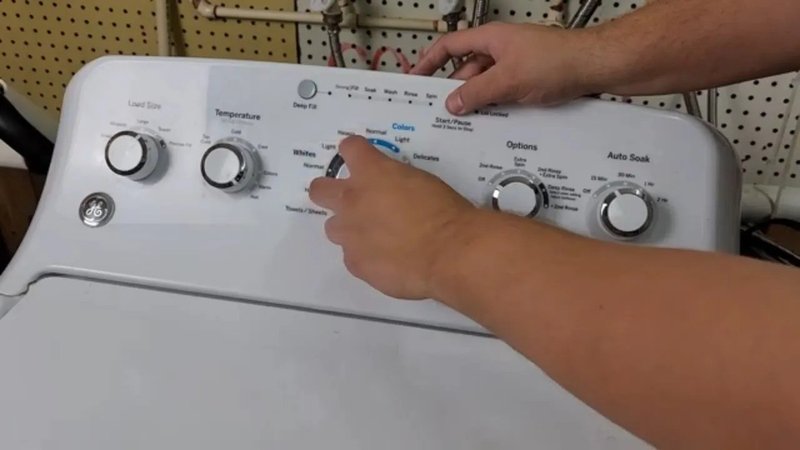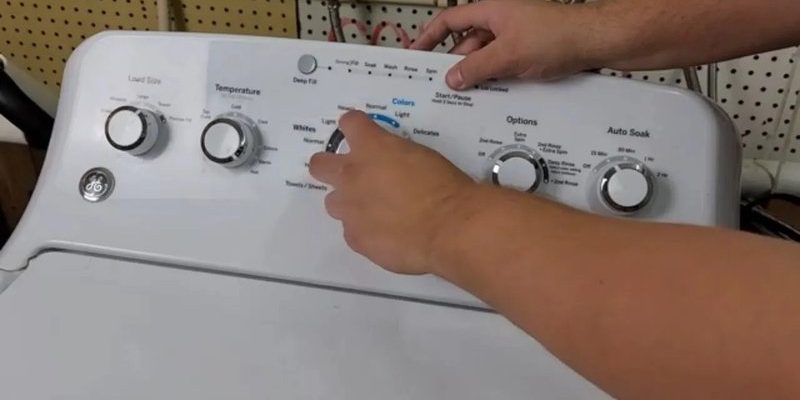
Encountering an E2 error code can be frustrating, especially if you’re not a repair wiz. But here’s the deal: sometimes the solution might be simpler than you think. Often, one of the first steps in troubleshooting is to reset your machine. Just as you might reboot a computer to clear out a temporary glitch, resetting your washing machine could resolve minor hiccups. But is that enough to fix the E2 error code? Let’s dig deeper to find out what causes this error, how resetting could help, and what to do if it doesn’t.
Understanding the E2 Error Code
To effectively tackle the E2 error code, it’s crucial to understand what it signifies. The E2 error in GE washing machines typically relates to a problem with the machine’s draining process. In simple terms, your machine is having trouble getting rid of water efficiently. Think of it like trying to drain a bathtub, but the plug refuses to budge. This could be due to a blockage or perhaps a malfunction in the system.
So why does this matter? If a washing machine can’t drain properly, it can’t prepare for the next cycle or end the current one cleanly. Water left behind can mean your clothes aren’t rinsed properly, leading to detergent residue and even unpleasant odors. So, addressing this error code isn’t just about getting rid of a pesky beeping machine—it’s also about ensuring your laundry comes out clean and fresh.
Knowing the most common causes of the E2 error helps in troubleshooting. Potential culprits could include a clogged drain hose or filter, a faulty pump, or even foreign objects stuck in the machine. By understanding these issues, you can take a more informed approach to fixing the problem, rather than just guessing.
Resetting Your GE Washing Machine
Alright, let’s talk about resetting your washing machine. You’ve noticed the E2 error code, and now you’re considering hitting that reset button. Resetting in the context of your washing machine simply means cutting off and restoring the power supply to hopefully clear any temporary issues. It’s like giving your washing machine a quick nap to recharge and realign itself.
Here’s how to reset a GE washing machine: first, unplug the machine from the power outlet. Wait for about one minute before plugging it back in. This brief power cut can sometimes reset the machine’s internal systems, especially if the problem was due to a temporary glitch. Once you’ve plugged it back in, turn the machine on and see if the error code persists.
But here’s the catch—resetting doesn’t always solve deeper mechanical issues. If the E2 error code reappears after a reset, it’s likely that there’s a more significant problem at hand. Consider it like rebooting a computer that has a virus. Sure, it might run for a bit after you restart it, but the underlying virus needs addressing too.
What If Resetting Doesn’t Work?
So, you’ve tried resetting the washing machine, but the E2 code stubbornly remains. What’s your next move? Firstly, don’t fret—there are still options to explore. If the reset didn’t do the trick, it’s time to roll up your sleeves and investigate further. Start by checking the drain hose. Ensure it’s not kinked or clogged, as this can hinder the machine’s ability to drain water properly.
Next, inspect the drain pump. This component plays a vital role in expelling water from the machine. If it’s not functioning correctly, you might need to clean it or replace it. Sometimes, small objects like coins or pins can find their way into the pump, causing obstructions.
If these steps don’t resolve the issue, it might be time to consider professional help. A technician can provide a thorough diagnosis and fix any complex problems that a simple reset can’t handle. Remember, just as you’d call a plumber for persistent leaks, there’s no shame in calling a washer expert when needed.
Preventing Future Error Codes
Wouldn’t it be nice to avoid these error codes altogether? While it’s not always possible to prevent every issue, there are steps you can take to minimize the chances of an E2 error popping up again. Regular maintenance is key. Periodically check and clean the drain hose and pump filter to ensure they’re free from debris and blockages.
Another tip is to be mindful of what you’re putting in your washing machine. Avoid overloading it with clothes, as this can strain the machine and hinder the draining process. Additionally, empty pockets before washing, as small items can escape into the machine and cause clogs.
In conclusion, while resetting your GE washing machine might fix the E2 error code temporarily, understanding the underlying causes and addressing them is crucial for long-term solutions. Take proactive steps to maintain your machine, and remember, a little preventative care can go a long way in ensuring your laundry routine stays hassle-free.
